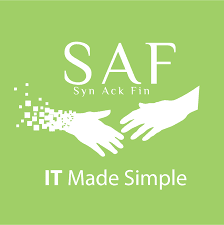Traditionally, organizations looking to manage IT infrastructure had two options: maintain an in-house team or outsource IT needs to a managed service provider (MSP).
On the one hand, the former solution provides greater control and proximity, allowing for quick response times and tailored solutions. Alternatively, the latter provides specialized expertise, cost-effectiveness, and scalability.
Many of today’s businesses search for the best of both worlds to manage unique needs. Co-managed IT is the way to go if you fall into this category. In this post, we’ll discuss what Co-managed IT is, its benefits, and how to implement it.
What Is Co-Managed IT?
Co-managed IT is a collaborative IT management approach where an organization partners with an MSP while retaining its in-house IT team.
In a typical Co-Management arrangement, the MSP is responsible for tasks that are either beyond the expertise or current bandwidth of the internal IT team, while the in-house team retains control over the business’ core IT functions.
In contrast, traditional IT outsourcing sees the business as heavily dependent on the MSP, who is entirely responsible for all aspects of IT support and maintenance.

Benefits of Co-Managed IT
A Co-managed IT model provides:
Increased Control
Maintaining an in-house team alongside an MSP gives you control over the extent of the latter’s involvement in your affairs. It also allows you to determine what type of technology makes up your infrastructure.
Flexibility for Businesses
Co-managed IT provides the flexibility you need to grow and adapt to new challenges. For example, as your business scales, you can quickly expand the MSP’s involvement or engage them in new projects without heavily impacting your existing IT environment.
This flexibility gives you access to the right level of support when needed without tying you down to a long-term commitment that may prove inefficient in the long run.
A Dedicated Team of IT Experts Working Alongside Internal Staff
Thanks to their familiarity with your company’s day-to-day business processes and challenges, an in-house IT team provides insight and context that helps MSPs deliver more tailored and practical solutions.
Growing Popularity of Co-Managed IT
Organizations of all sizes are regularly adopting Co-managed IT.
A big contributor to this is an increased demand for cloud migrations and operations. As more businesses embrace cloud solutions, their in-house IT teams may lack the specialized knowledge needed for seamless migration and optimal management. Co-managed IT bridges this gap by partnering businesses with MSPs with cloud operations expertise.
Another point to note is that Co-managed IT is a less-expensive affair. Thanks to hiring costs, personnel remuneration, and employment benefits, maintaining a large in-house team of experts can be financially burdensome, especially for smaller organizations.
Co-managed IT allows businesses to continue to have their key day-to-day operations handled by staff while they have MSPs do the heavy lifting when needed. This way, they get access to top-notch services, but also at a fraction of the cost if they’d hired a team of in-house experts.
Co-Managed IT Services
Here are a few services you could look to implement co-management in:
Network Monitoring
Network monitoring is the continuous tracking of network devices, traffic patterns, and bandwidth usage.
In a Co-managed IT setup, network monitoring is one of the tasks that MSPs primarily handle. With a dedicated team using advanced monitoring tools, they can better monitor your network 24/7, respond to alerts promptly, perform proactive maintenance, detect performance bottlenecks, and prevent downtime.
Software Updates and Patch Deployment
Software updates and patches are critical to maintaining a secure and efficient IT environment. MSPs ensure that applications and operating systems are promptly updated across your infrastructure. With their scheduling tools and expertise, they deploy these updates systematically and minimize disruptions.
Your internal team also communicates with users about upcoming updates, gives info about potential changes to workflows, and provides feedback on the effectiveness of these updates.
Security Management
Of course, security management is a shared responsibility for everyone.
MSPs can typically bring cybersecurity expertise to the table. Using any number of preferred vendors, they would traditionally put security solutions such as firewalls, intrusion detection systems, and security information and event management (SIEM) platforms into place. They also conduct regular vulnerability and threat detection checks, respond to incidents, and work closely with your in-house team to craft a response plan in the event of security incidents.
Your internal staff also collaborates with MSPs in developing security policies and procedures that align with industry standards and are specific to the organization’s needs.
Being more familiar with your business’ internal structure, they’re primarily responsible for tailoring access control policies depending on job roles. This ensures that employees have appropriate access levels to sensitive data and systems. Your in-house staff also oversees physical security measures, such as preventing unauthorized access to critical infrastructure.
How JumpCloud Supports Co-Managed IT for MSPs
JumpCloud is a leading provider of IT solutions focused on empowering MSPs to improve their service offerings and enhance their clients’ IT experience.
The platform helps MSPs create the perfect synergy with clients’ IT teams and efficiently manage resources across diverse environments, either on-prem or cloud-based.
Here are a few reasons why JumpCloud is an MSP’s ideal option when managing an IT environment jointly with a client:
1. A Unified Toolkit
From a Password Manager to multi-factor authentication (MFA) to single sign-on (SSO) and mobile device management (MDM), JumpCloud is the perfect hedge against tool sprawl.
Eliminating multiple disjointed solutions in favor of one toolbox reduces complexity and increases efficiency for both parties. The user-friendly interface also presents an intuitive dashboard that MSPs and in-house teams get familiar with quickly.
2. Remote Management
Thanks to JumpCloud’s cloud-based architecture, MSPs have the ability to support their clients’ users regardless of location. Depending on the services provided, MSPs can pick up the slack that IT teams face when dealing with remote users.
3. Scalability and Flexible Pricing
Regardless of fluctuating demands, MSPs and clients are assured that they only need to pay for the services they need and use. Scaling IT environments up or down per business requirements becomes possible with seamless user onboarding and offboarding.
4. Multi-Tenant Portal
JumpCloud’s Multi-Tenant Portal helps you efficiently manage multiple clients’ environments from a single interface. This provides a comprehensive view of each client environment, enabling you to deliver personalized services.
5. Cross-Platform Support
MSPs and their clients no longer need to worry about having different solutions for different devices. With its cross-platform support across Windows, macOS, and Linux devices, device management becomes less expensive and less hassle for everyone involved.
6. Security and Compliance Features
Designed to enable Zero Trust security, JumpCloud helps businesses meet regulatory requirements and safeguard data. With features like MFA and user access control, organizations can protect themselves against insider threats and unauthorized access. Thanks to event logging and auditing capabilities, they also get detailed reports that assist in demonstrating compliance.
7. Integrations and Automation
With an extensive catalog of third-party service integrations, JumpCloud provides an excellent avenue for businesses to adopt preferred solutions that suit their needs. MSPs and clients can also leverage automation provided by JumpCloud’s partners to improve their workflows and increase efficiency.
Case Studies
Here are a few case studies of MSPs that have leveraged JumpCloud to improve their service offerings:
Syn Ack Fin (SAF) Improves IT Experience for Customers

Operating out of Denver, Colorado, is Syn Ack Fin, an MSP that has been in business since the turn of the century. With an extensive track record of supporting various business owners, SAF has built a reputation for being a one-stop shop for businesses’ IT needs.
SAF’s path first crossed with JumpCloud when it needed a solution for authenticating Mac devices on Active Directory (AD). After adopting the JumpCloud Directory Platform, SAF experienced significant improvements in its in-house device management and authentication.
Soon, it began exploring ways to provide better offerings for its clients with JumpCloud. Several of SAF’s clients also suffered from the same problem that SAF initially had, with some others also contending with nonexistent password databases and non-centralized repositories.
While SAF initially had some challenges securing clients’ buy-in, the pandemic happened soon after, and its clients began seeing the need for a change to support remote work better. In no time, JumpCloud became an integral part of SAF’s services, and its clients began reporting more significant time savings, increased efficiency, and better satisfaction.
Today, JumpCloud remains central to SAF’s stack because, as Antonio Wint, founder and CEO of Syn Ack Fin, stated, “The product is moving in a direction that I can continue to sell as a managed services provider.”
Altitude Reduces Infrastructure Costs

Established in 2009, Altitude Integrations (AI) is another Colorado-based MSP with over 200 clients nationwide. Priding itself as a provider that supports its clients regardless of the tools they’ve got in their stack, Altitude Integrations helps organizations navigate their cloud transition.
In selecting the technology it offers to its clients, Altitude Integrations considers three factors: security, efficiency, and cost-savings.
With JumpCloud’s Directory and System Insights features, AI monitors security and configuration data, especially around device and user activity. Altitude Integrations, as well as its clients, also enjoy greater efficiency thanks to JumpCloud.
The intuitive Multi-Tenant Portal that the platform provides gives Altitude Integrations excellent visibility into all clients’ infrastructure and enables it to provision and deprovision users quickly. Thanks to remote support, their clients also reported 75% fewer password requests when they transitioned from AD to JumpCloud.
Altitude Integrations also leverages JumpCloud to reduce costs for its clients, who can now do away with capital expenditure costs on servers and maintenance. After going through the numbers, CEO Brett Ramberg made a fantastic discovery: JumpCloud helps Altitude Integrations clients save up to 4/5ths of the costs they would have incurred in an AD + Okta setup.
Macktez Offers High-Caliber IT Solutions

Macktez is a New-York based MSP that caters to businesses and nonprofits in creative industries. It assists clients in cutting down reliance on on-prem infrastructure, supporting remote environments, and introducing centralized authentication to resource access.
Because most of its clients used to operate in an AD-controlled environment, Macktez set out to adopt better solutions. JumpCloud was always the forerunner in Macktez’s options as it had been leveraging JumpCloud’s Cloud Radius tool for Wi-Fi authentication.
Being familiar with the platform’s full capabilities, it didn’t take long for Macktez to realize that JumpCloud was the best product to complement the scalable and adaptive solutions it offered to clients.
In no time, Macktez began utilizing the JumpCloud Multi-Platform Portal to support its clients. From user onboarding and offboarding to remote support and providing resource access, JumpCloud has been integral to Macktez’s excellent service delivery. Now, Macktez builds scalable, future-proof solutions with JumpCloud providing benefits to all involved.
As Mactez’s CTO and principal architect, Reily Scull, mentions:
JumpCloud is consistent. Everything it does, it does well. It works for the IT administrator better. It works for the end user better. It works for the finance department better.
Partner with JumpCloud for Co-Managed IT
As social realities and technology continue to evolve, organizations must build flexible IT infrastructures capable of pivoting with the times. Co-managed IT is an excellent means to ensure that internal IT teams don’t get overwhelmed by increased workloads.
Capitalizing on the combined strengths of in-house expertise and MSPs helps an organization stay ahead and deliver high-caliber solutions to meet present and future demands. It also provides a cost-effective means for businesses to enjoy MSP’s expertise in domains that in-house staff may lack.
Thanks to the JumpCloud Directory Platform, MSPs and their clients can operate within a unified IT environment that is scalable, secure, and provides a great user experience. So, are you an MSP looking to deliver high-end solutions to clients?
Become a JumpCloud MSP partner today to get access to resources and tools that help you improve your service offerings. Alternatively, if you are a business owner seeking expert IT support, find a trusted MSP partner within the JumpCloud Partner program to ensure your IT stays ahead of the curve.




